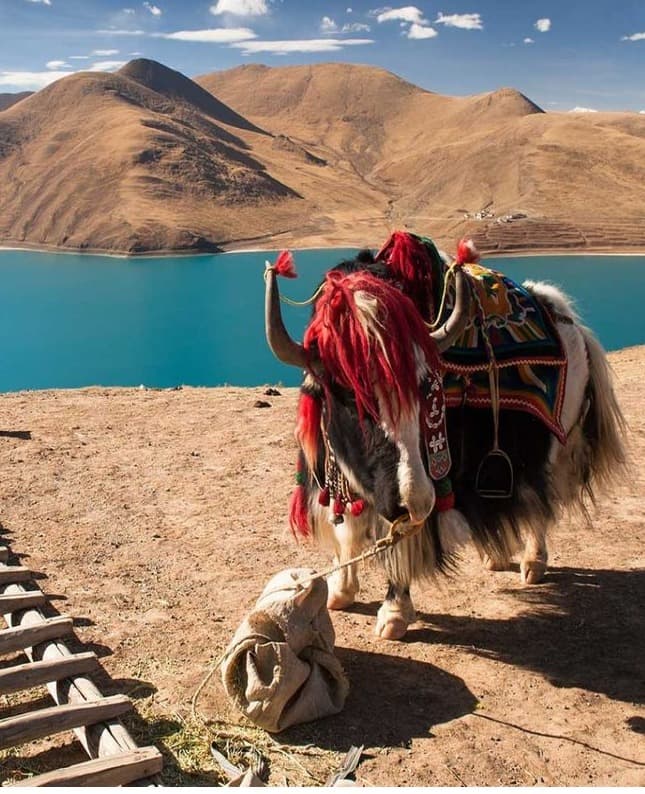Tibet is a mysterious Buddhist kingdom popularly known as “the roof of the world”. The kingdom remains away from the modern world and holds an air of mystery around it. This is also one of the reasons why hundreds of tourists flock in Tibet every year.
For hundreds of years, it was considered a forbidden land of treasure. Many traders and explorers travelled in the quest of a long lost Shangri-la Kingdom. The high altitude Tibetan plateau is also known as a “land of snows”. There are many snow capped mountains, grasslands, yak grazing meadows, magnificent monasteries, and others in the region.
The entire Tibet region has Himalayan Mountains to its south. The Tibetan plateau situated 4,000-5,000 meters above the sea level is a natural wonderland. The three main rivers of Tibet originating from the Himalayas are Brahmaputra River, Jinshajiang River, Nujiang River, and Lancang River.
The rugged landscapes and the high altitude made this place almost inaccessible for centuries. However, with modernization there has been considerable development in the transportation sector. The Lhasa airport, the Qinghai-Tibet Railway and highways around Tibet has made this region quite accessible.
Tourism in Tibet started around the 1980s. The majestic Potala Palace, Jokhang Temple in Lhasa, Tashilhunpo Monastery, are some of the architectural landmarks of Tibet. The spectacular view of the natural Namtso Lake, and Mt. Everest(for details read: Where is mount Everest located?) is also the highlight of the tour.
Tibetan people celebrate many festivals throughout the year. The Tibetan New Year (Lhosar), Bathing Festival, Shoton Festival, are some of the most important festivals celebrated in the region. The friendly people and their incredible hospitality will warm your heart. The clear blue sky and the stable weather is also an advantage of touring in this region.
Agriculture and animal rearing is the primary source of income among the Tibetan people. Besides that, the advent of tourism has brought many local handicrafts and articraft business in the region. These small businesses contribute a lot to the growth and development of the region.
The weather around it is extremely dry with an average temperature of 15 degrees Celsius in winter, and 28 degrees Celsius in summers. The months of May to September is the monsoon season . Winters are extremely cold . The strong sunlight makes the temperatures around the daytime mild and comfortable.
The maximum temperature in summer can hit as high as 30 degrees Celsius and drop to as low as -23 degrees celsius in midwinter. Late spring to early fall is the ideal time to visit Tibet, a land of adventure. Also, trekking in Tibet is one of the most sought after activities in this beautiful kingdom.
There are some restrictions for foreign tourists. You will require a special travel permit along with a Chinese visa to tour in Tibet. Besides that, a tour and travel company has to manage all the trips along with a guide. Overall, the beautiful Tibet is a great travel destination soaked in natural and architectural beauty.
Is Tibet a country?
Tibet was an independent nation. But after 1950s till todays date, it is regarded as a province-level autonomous region in southwest China. They got invaded by the newly established Chinese Communist regime during 1950. And that’s the reason why Tibet today is under China’s occupation.
But even today, Tibetan people has their own culture, religion, language and political system. The Tibetan Government-in-Exile affirm that it is an independent state while PRC(People’s Republic of China) claims it’s an integral part of China.



